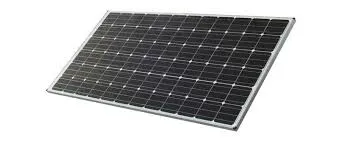Advancements in Bifacial Solar Panel Technology and Its Impact on Renewable Energy Efficiency
Bifacial Solar Panel Technology Harnessing Solar Energy from Both Sides
In the quest for renewable energy solutions, solar power stands out as one of the most promising alternatives, contributing significantly to reducing carbon footprints and addressing climate change. Among the array of innovations in solar technology, bifacial solar panels are gaining traction as a highly efficient option. This article delves into bifacial solar panel technology, exploring its advantages, working mechanism, market trends, and future potential.
Understanding Bifacial Solar Panels
Bifacial solar panels differ from traditional monofacial panels in that they capture sunlight on both sides of the panel. Most traditional solar panels are designed to receive sunlight from one side only. Conversely, bifacial panels utilize dual-glass technology, which allows solar cells to absorb sunlight from both the front and rear sides. This innovative design not only increases energy generation but also improves overall efficiency.
How Bifacial Solar Panels Work
The working mechanism of bifacial solar panels relies on reflection and refraction of sunlight. When sunlight hits the solar cells on the front side, they generate electricity as usual. However, the surface beneath the panel—typically made of reflective materials like concrete or sand—can reflect additional sunlight onto the rear side of the panel.
The efficiency of bifacial panels can be influenced by various factors, including the albedo effect, which refers to the reflectivity of the surface where the panels are installed. Higher albedo surfaces, such as snowy or sandy areas, can significantly enhance the amount of reflected sunlight. As a result, the energy output of bifacial solar panels can be notably higher—often by 10% to 20%—compared to traditional panels under similar conditions.
Advantages of Bifacial Solar Panels
1. Increased Energy Production The dual-sided design enables bifacial panels to capture more sunlight, leading to higher energy output over their lifespan. This increased efficiency can make them a more cost-effective option for large-scale solar installations.
bifacial solar panel technology

2. Durability and Longevity Bifacial panels are typically built with robust materials, such as tempered glass on both sides, making them more resistant to environmental factors. They often have longer warranties compared to traditional panels, as manufacturers recognize their enhanced durability.
3. Better Performance in Various Conditions Bifacial solar panels perform well in diverse weather conditions. Whether in cooler climates with potential snowfall or in hot environments, the dual-sided absorption capability allows for optimal energy capture.
4. Environmental Impact By increasing energy production per installation, bifacial technology can help reduce the land footprint required for solar farms. This is essential as the demand for energy grows, and sustainability becomes increasingly important.
Market Trends and Applications
The adoption of bifacial solar panels has been on the rise, driven by advancements in technology and increasing awareness of renewable energy. The global solar energy market is projected to grow significantly, with bifacial panels constituting a substantial portion of this growth. Utilities, commercial businesses, and residential users are showing increased interest in bifacial technology due to its efficiency and long-term benefits.
Bifacial solar panels are particularly suited for large-scale solar projects, such as solar farms, where land use and energy yield are critical considerations. They are also being integrated into innovative applications like building-integrated photovoltaics (BIPV), where solar panels serve both as energy generators and functional building materials.
Future Potential
As research and development in bifacial solar technology advance, further improvements in efficiency and cost-effectiveness are expected. The focus on innovation is likely to lead to the creation of more specialized bifacial panels that can optimize energy harvest in various geographic and environmental conditions. Furthermore, the increasing emphasis on sustainable energy solutions supports the potential for bifacial technology to become a standard in the solar industry.
In conclusion, bifacial solar panels represent a significant advancement in solar technology, offering enhanced efficiency, durability, and environmental benefits. As the world moves towards a greener future, the innovative design and functionality of bifacial panels position them as a vital tool in maximizing solar energy utilization and contributing to a sustainable energy landscape. By leveraging the dual-sided capture of solar energy, bifacial technology not only empowers consumers and businesses but also plays a pivotal role in combating climate change for future generations.
-
Unlocking Energy Freedom with the Off Grid Solar InverterNewsJun.06,2025
-
Unlock More Solar Power with a High-Efficiency Bifacial Solar PanelNewsJun.06,2025
-
Power Your Future with High-Efficiency Monocrystalline Solar PanelsNewsJun.06,2025
-
Next-Gen Solar Power Starts with Micro Solar InvertersNewsJun.06,2025
-
Harnessing Peak Efficiency with the On Grid Solar InverterNewsJun.06,2025
-
Discover Unmatched Efficiency with the Latest String Solar InverterNewsJun.06,2025







